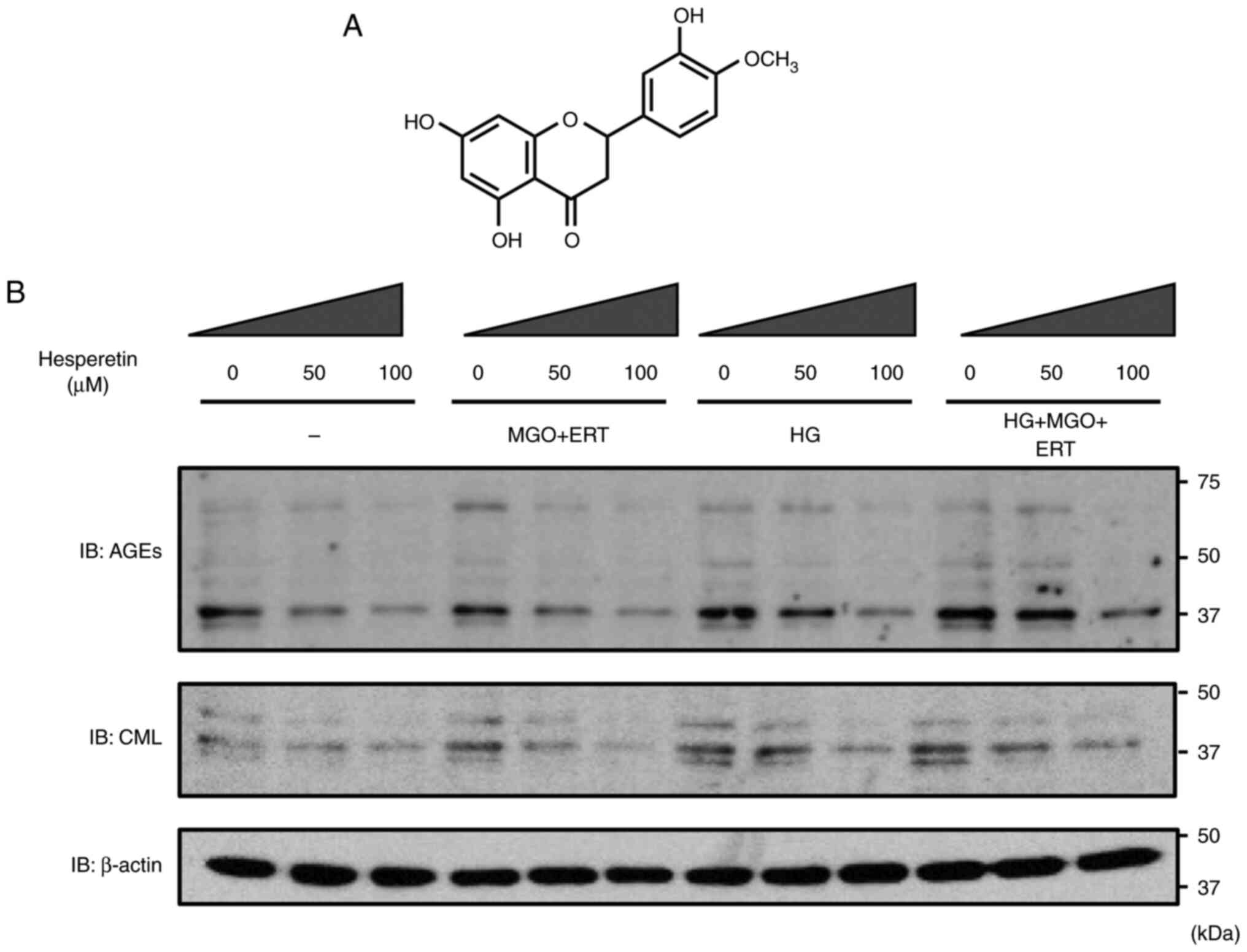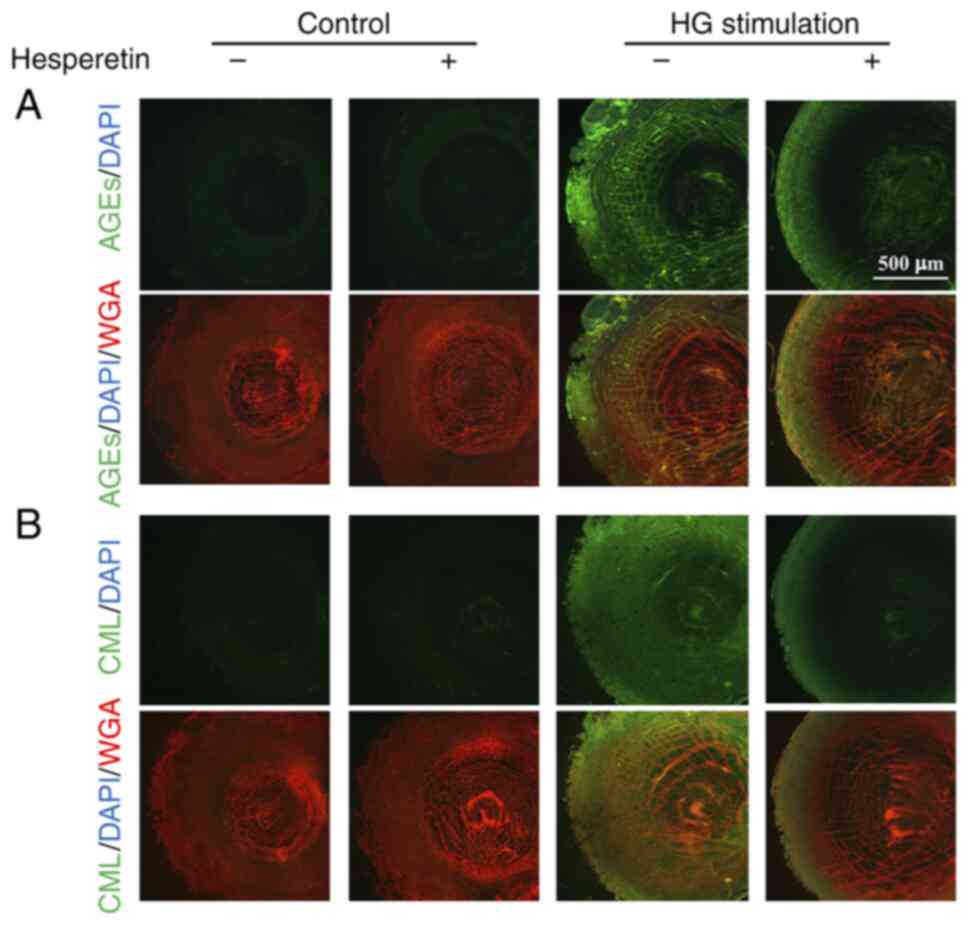|
1
|
Vasvada AR and Raj SM: Cataract treatment
where resources are scarce. Lancet. 365:550–551. 2005. View Article : Google Scholar : PubMed/NCBI
|
|
2
|
Little MP, Kitahara CM, Cahoon EK, Bernier
MO, Velazquez-Kronen R, Doody MM, Borrego D, Miller JS, Alexander
BH, Simon SL, et al: Occupational radiation exposure and risk of
cataract incidence in a cohort of US radiologic technologists. Eur
J Epidemiol. 33:1179–1191. 2018. View Article : Google Scholar : PubMed/NCBI
|
|
3
|
Little MP, Cahoon EK, Kitahara CM, Simon
SL, Hamada N and Linet MS: Occupational radiation exposure and
excess additive risk of cataract incidence in a cohort of US
radiologic technologists. Occup Environ Med. 77:1–8. 2020.
View Article : Google Scholar : PubMed/NCBI
|
|
4
|
Voorter CE, de Haard-Hoekman WA, van den
Oetelaar PJ, Bloemendal H and de Jong WW: Spontaneous peptide bond
cleavage in aging alpha-crystallin through a succinimide
intermediate. J Biol Chem. 263:19020–19023. 1988. View Article : Google Scholar : PubMed/NCBI
|
|
5
|
Takemoto L, Horwitz J and Emmons T:
Oxidation of the N-terminal methionine of lens alpha-A crystallin.
Curr Eye Res. 11:651–655. 1992. View Article : Google Scholar : PubMed/NCBI
|
|
6
|
Miesbauer LR, Zhou X, Yang Z, Yang Z, Sun
Y, Smith DL and Smith JB: Post-translational modifications of
water-soluble human lens crystallins from young adults. J Biol
Chem. 269:12494–12502. 1994. View Article : Google Scholar : PubMed/NCBI
|
|
7
|
Fujii N, Momose Y, Yamasaki M, Yamagaki T,
Nakanishi H, Uemura T, Takita M and Ishii N: The conformation
formed by the domain after alanine-155 induces inversion of
aspartic acid-151 in alpha A-crystallin from aged human lenses.
Biochem Biophys Res Commun. 239:918–923. 1997. View Article : Google Scholar : PubMed/NCBI
|
|
8
|
Argirova MD and Breipohl W: Glycated
proteins can enhance photooxidative stress in aged and diabetic
lenses. Free Radic Res. 36:1251–1259. 2002. View Article : Google Scholar : PubMed/NCBI
|
|
9
|
McAvoy JW, Chamberlain CG, de Iongh RU,
Hales AM and Lovicu FJ: Lens development. Eye (Lond). 13:425–437.
1999. View Article : Google Scholar : PubMed/NCBI
|
|
10
|
Nemet I and Monnier VM: Vitamin C
degradation products and pathways in the human lens. J Biol Chem.
286:37128–37136. 2011. View Article : Google Scholar : PubMed/NCBI
|
|
11
|
Nandi SK, Nahomi RB, Rankenberg J, Glomb
MA and Nagaraj RH: Glycation-mediated inter-protein cross-linking
is promoted by chaperone-client complexes of α-crystallin:
Implications for lens aging and presbyopia. J Biol Chem.
295:5701–5716. 2020. View Article : Google Scholar : PubMed/NCBI
|
|
12
|
McGinty SJ and Truscott RJW: Presbyopia:
The first stage of nuclear cataract? Ophthalmic Res. 38:137–148.
2006. View Article : Google Scholar : PubMed/NCBI
|
|
13
|
Fernández J, Rodríguez-Vallejo M, Martínez
J, Tauste A and Piñero DP: From presbyopia to cataracts: A critical
review on dysfunctional lens syndrome. J Ophthalmol.
2018:43184052018. View Article : Google Scholar : PubMed/NCBI
|
|
14
|
Akiyama S, Katsumata S, Suzuki K, Nakaya
Y, Ishimi Y and Uehara M: Hypoglycemic and hypolipidemic effects of
hesperidin and cyclodextrin-clathrated hesperetin in Goto-Kakizaki
rats with type 2 diabetes. Biosci Biotechnol Biochem. 73:2779–2782.
2009. View Article : Google Scholar : PubMed/NCBI
|
|
15
|
Alu'datt MH, Rababah T, Alhamad MN,
Al-Mahasneh MA, Ereifej K, Al-Karaki G, Al-Duais M, Andrade JE,
Tranchant CC, Kubow S and Ghozlan KA: Profiles of free and bound
phenolics extracted from citrus fruits and their roles in
biological systems: Content, and antioxidant, anti-diabetic and
anti-hypertensive properties. Food Funct. 8:3187–3197. 2017.
View Article : Google Scholar : PubMed/NCBI
|
|
16
|
Nakazawa Y, Oka M, Bando M and Takehana M:
Hesperetin prevents selenite-induced cataract in rats. Mol Vis.
21:804–810. 2015.PubMed/NCBI
|
|
17
|
Nakazawa Y, Oka M, Tamura H and Takehana
M: Effect of hesperetin on chaperone activity in selenite-induced
cataract. Open Med (Wars). 11:183–189. 2016. View Article : Google Scholar : PubMed/NCBI
|
|
18
|
Nakazawa Y, Pauze M, Fukuyama K, Nagai N,
Funakoshi-Tago M, Sugai T and Tamura H: Effect of hesperetin
derivatives on the development of selenite-induced cataracts in
rats. Mol Med Rep. 18:1043–1050. 2018.PubMed/NCBI
|
|
19
|
Nakazawa Y, Aoki M, Ishiwa S, Morishita N,
Endo S, Nagai N, Yamamoto N, Funakoshi-Tago M and Tamura H: Oral
intake of α-glucosyl-hesperidin ameliorates selenite-induced
cataract formation. Mol Med Rep. 21:1258–1266. 2020.PubMed/NCBI
|
|
20
|
Nakazawa Y, Doki Y, Sugiyama Y, Kobayashi
R, Nagai N, Morishita N, Endo S, Funakoshi-Tago M and Tamura H:
Effect of alpha-glucosyl-hesperidin consumption on lens sclerosis
and presbyopia. Cells. 10:3822021. View Article : Google Scholar : PubMed/NCBI
|
|
21
|
Ouyang A, Garner TB and Fleenor BS:
Hesperidin reverses perivascular adipose-mediated aortic stiffness
with aging. Exp Gerontol. 97:68–72. 2017. View Article : Google Scholar : PubMed/NCBI
|
|
22
|
Khan MS, Rehman MT, Ismael MA, AlAjmi MF,
Alruwaished GI, Alokail MS and Khan MR: Bioflavonoid (hesperidin)
restrains protein oxidation and advanced glycation end product
formation by targeting AGEs and glycolytic enzymes. Cell Biochem
Biophys. 79:833–844. 2021. View Article : Google Scholar : PubMed/NCBI
|
|
23
|
Yamamoto N, Takeda S, Hatsusaka N,
Hiramatsu N, Nagai N, Deguchi S, Nakazawa Y, Takata T, Kodera S,
Hirata A, et al: Effect of a lens protein in low-temperature
culture of novel immortalized human lens epithelial cells
(iHLEC-NY2). Cells. 9:26702020. View Article : Google Scholar : PubMed/NCBI
|
|
24
|
Jacobs MD, Donaldson PJ, Cannell MB and
Soeller C: Resolving morphology and antibody labeling over large
distances in tissue sections. Microsc Res Tech. 61:83–91. 2003.
View Article : Google Scholar : PubMed/NCBI
|
|
25
|
Nakazawa Y, Donaldson PJ and Petrova RS:
Verification and spatial mapping of TRPV1 and TRPV4 expression in
the embryonic and adult mouse lens. Exp Eye Res. 186:1077072019.
View Article : Google Scholar : PubMed/NCBI
|
|
26
|
Nakazawa Y, Nagai N, Ishimori N, Oguchi J
and Tamura H: Administration of antioxidant compounds affects the
lens chaperone activity and prevents the onset of cataracts. Biomed
Pharmacother. 95:137–143. 2017. View Article : Google Scholar : PubMed/NCBI
|
|
27
|
Atchison DA: Accommodation and presbyopia.
Ophthalmic Physiol Opt. 15:255–272. 1995. View Article : Google Scholar : PubMed/NCBI
|
|
28
|
Wolffsohn JS and Davies LN: Presbyopia:
Effectiveness of correction strategies. Prog Retin Eye Res.
68:124–143. 2019. View Article : Google Scholar : PubMed/NCBI
|
|
29
|
Holden BA, Fricke TR, Wilson DA, Jong M,
Naidoo KS, Sankaridurg P, Wong TY, Naduvilath TJ and Resnikoff S:
Global prevalence of myopia and high myopia and temporal trends
from 2000 through 2050. Ophthalmology. 123:1036–1042. 2016.
View Article : Google Scholar : PubMed/NCBI
|
|
30
|
Strenk SA, Semmlow JL, Strenk LM, Munoz P,
Gronlund-Jacob J and DeMarco JK: Age-related changes in human
ciliary muscle and lens: A magnetic resonance imaging study. Invest
Ophthalmol Vis Sci. 40:1162–1169. 1999.PubMed/NCBI
|
|
31
|
Hermans EA, Pouwels PJW, Dubbelman M,
Kuijer JPA, van der Heijde RGL and Heethaar RM: Constant volume of
the human lens and decrease in surface area of the capsular bag
during accommodation: An MRI and Scheimpflug study. Invest
Ophthalmol Vis Sci. 50:281–289. 2009. View Article : Google Scholar : PubMed/NCBI
|
|
32
|
Ostrin LA and Glasser A: Edinger-Westphal
and pharmacologically stimulated accommodative refractive changes
and lens and ciliary process movements in rhesus monkeys. Exp Eye
Res. 84:302–313. 2007. View Article : Google Scholar : PubMed/NCBI
|
|
33
|
Koopmans SA, Terwee T, Barkhof J, Haitjema
HJ and Kooijman AC: Polymer refilling of presbyopic human lenses in
vitro restores the ability to undergo accommodative changes. Invest
Ophthalmol Vis Sci. 44:250–257. 2003. View Article : Google Scholar : PubMed/NCBI
|
|
34
|
Pathai S, Shiels PG, Lawn SD, Cook C and
Gibert C: The eye as a model of ageing in translational
research-molecular, epigenetic and clinical aspects. Ageing Res
Rev. 12:490–508. 2013. View Article : Google Scholar : PubMed/NCBI
|
|
35
|
Jackson MA, Giyanani J, Shabaik Y, Penzner
J, Gore AV, Robinson MR and Waring GOW IV: In vitro and in-eye
comparison of commercial pilocarpine ophthalmic solution and an
optimized, reformulated pilocarpine for presbyopia treatment.
Ophthalmol Ther. 11:869–879. 2022. View Article : Google Scholar : PubMed/NCBI
|
|
36
|
Al-Khersan H, Flynn HW Jr and Townsend JH:
Retinal detachments associated with topical pilocarpine use for
presbyopia. Am J Ophthalmol. 242:52–55. 2022. View Article : Google Scholar : PubMed/NCBI
|
|
37
|
Eton EA, Zhao PY, Johnson MW, Rao RC and
Huvard MJ: Rhegmatogenous retinal detachment following initiation
of pilocarpine hydrochloride ophthalmic solution 1.25% for
treatment of presbyopia. Retin Cases Brief Rep. Aug 12–2022.(Epub
ahead of print). View Article : Google Scholar : PubMed/NCBI
|
|
38
|
Amarikwa L, Michalek SM, Caul S,
Mruthyunjaya P and Rahimy E: Vitreofoveal traction associated with
pilocarpine for presbyopia. Ophthalmic Surg Lasers Imaging Retina.
53:410–411. 2022. View Article : Google Scholar : PubMed/NCBI
|
|
39
|
Garner WH and Garner MH: Protein disulfide
levels and lens elasticity modulation: Applications for presbyopia.
Invest Ophthalmol Vis Sci. 57:2851–2863. 2016. View Article : Google Scholar : PubMed/NCBI
|
|
40
|
Nandi SK, Rankenberg J, Rakete S, Nahomi
RB, Glomb MA, Linetsky MD and Nagaraj RH: Glycation-mediated
protein crosslinking and stiffening in mouse lenses are inhibited
by carboxitin in vitro. Glycoconj J. 38:347–359. 2021. View Article : Google Scholar : PubMed/NCBI
|
|
41
|
Gao J, Sun X, White TW, Delamere NA and
Mathias RT: Feedback regulation of intracellular hydrostatic
pressure in surface cells of the lens. Biophys J. 109:1830–1839.
2015. View Article : Google Scholar : PubMed/NCBI
|
|
42
|
Umran NSS, Mohamed S, Lau SF and Mohd
Ishak NI: Citrus hystrix leaf extract attenuated diabetic-cataract
in STZ-rats. J Food Biochem. 44:e132582020. View Article : Google Scholar : PubMed/NCBI
|














